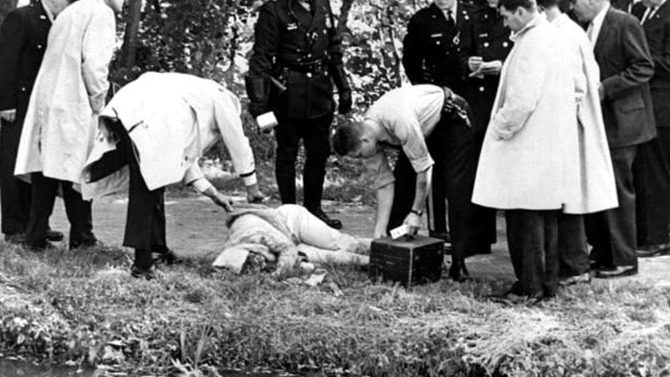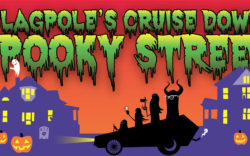On May 30, 2012, I published an article in Flagpole about the notorious unsolved murder of Mary Pinchot Meyer. As I explained, this woman, a mistress of President John F. Kennedy and the ex-wife of Cord Meyer, a high-ranking CIA officer responsible for covert actions, was the victim of an execution-style shooting in broad daylight while walking on the towpath near the Chesapeake and Ohio canal in a public park in Washington, D.C. on Oct. 12, 1964, two weeks after the release of the Warren Report. A hapless, diminutive, black day laborer of limited intelligence, Ray Crump, was tried for the murder but acquitted by a jury which quite properly determined that the evidence of Crump’s guilt was flimsy.
The murder, I pointed out, “was not a robbery or rape attempt gone bad but a well executed, professional hit by a trained assassin.†The most plausible explanation for the killing, I said, was that “Meyer knew that the CIA had something to do with JFK’s assassination, that she saw the CIA involvement was being covered up, that she was appalled at the sorry investigation by the Warren Commission and shocked by the superficiality of the Warren Report, and that she planned to go public with what she knew.†The actual killer, I suggested, was probably a CIA contract assassin, and may very well have been the unidentified black man police briefly spotted hiding in the woods near the towpath a few minutes after the murder, but who eluded capture. (That black man could not have been Crump, because Crump had already been detained by other police in another part of the park.)
Since that article appeared, I have been contacted by a retired District of Columbia high school teacher, 78-year-old Harold Liberman, who says that he was nearby when Meyer was slain, that he briefly spoke with her just before she was murdered, and that with his own eyes he saw the murderer right after the killing (although he did not witness the murder itself). Mr. Liberman is now retired and lives not far from Athens. (In my May 30 article, I noted that the night of Meyer’s murder and again the following morning, James J. Angleton, the legendary CIA official in charge of counterintelligence, surreptitiously entered Meyer’s home and took away various documents, including her diary, that were never seen again. Over a decade after Mary Meyer’s murder, through an amazing coincidence, Mr. Liberman, who supplemented his teacher’s income by beekeeping, kept bees for Angleton and on many occasions visited Angleton’s Virginia residence. At the time, Mr. Liberman knew that Angleton held a high position in government but did not know that Angleton was with the CIA. And, of course, he certainly knew nothing about Angleton’s clandestine entries into Mary Meyer’s home back in 1964.)
Mr. Liberman’s account of the events of Oct. 12, 1964 has never been published or presented to the public before. I have talked with and questioned Mr. Liberman on several occasions. He is a credible person, and I have found no valid reasons for disbelieving his story, which I do not think he has made up. Nothing he has told me has turned out to be false. Everything he has said to me about the murder is consistent with the known facts, and, in my judgment, his account is based entirely upon his personal knowledge. He has also explained to my satisfaction why he did not publicly reveal his story earlier. If Mr. Liberman is telling the truth—and I believe he is—then he saw the assassin, and the assassin must have been the black man police caught a glimpse of in the woods but was never seen again.
In the hope that publication of Mr. Liberman’s written statement of what he saw and heard on the day Mary Meyer was gunned down will assist in the continuing search for the truth about her mysterious murder, I am setting it forth below in its entirety.
My Encounter with Mary Meyer Moments Before Her Murder
Monday, October 12, 1964 was a bad day. I was a Washingtonian but at that time was residing in Kansas, studying for a master’s degree at the University of Kansas. I had some urgent business to take care of in D.C., and I flew on my first jet from Kansas City to D.C. From Dulles airport I went to Georgetown, where a dear friend told me she did not want to see me or talk to me again. I was upset, because this was a fine woman giving me a “Dear John†message, but was relieved because I was not ready for a serious relationship. I was assured that my precious freedom would continue. When I left her apartment, I needed to clear my head, and I took a short walk through Georgetown to one of my favorite places, the Chesapeake and Ohio canal. It was a nice day, and the fresh air and sunshine helped restore some sanity in my life.
It was around noon. I crossed over M Street, the main drag in Georgetown, and reached a footbridge that would cross over the canal and take me to the footpath alongside the canal. As I started to cross the footbridge, I noticed a very attractive lady standing at the far end of the footbridge. As I approached her, it was very clear to me that she was frightened. I had enough good sense to ask her if she was all right. She said yes, and I continued walking across the bridge. As I stepped off the bridge I looked up at her, and I asked again if I could be of any help. She carried a black notebook in her arms held tightly across her chest. She looked at me and asked if I was the person she was supposed to give the notebook to. I shook my head no and tried to be polite as I told her I did not know what she was talking about.
When I left her standing on the bridge, she still had the look of a very frightened woman who had just cast her eyes on the devil. She came down off the bridge and began to walk on the towpath away from D.C. I watched her as she walked away from me. She had the look of someone with class and education. My observation was that of a neighborhood kid from 4th and Farragut Street [in D.C.] who was lacking experience in almost every aspect of life.
Did I want to get involved in this situation? In spite of many doubts I began to follow her from a distance. Her rendezvous ahead seemed to cause her to quicken her steps, and she pulled away from me. I had already had my crisis for the day, and my foreboding about this lady caused me to hesitate. While I was thinking, I heard a gunshot. One or two shots. I wasn’t sure because the noise scared the hell out of me. If I continued walking on the towpath, I believed I was going to get myself into a dangerous situation. I turned around and walked quickly toward the footbridge. After a number of steps, I stopped and cautiously turned around and walked toward the action. I had heard the gunshots and a scream, but where was the body? I learned later that the poor woman was dragged to the canal’s edge, out of my sight.
I never did see her, but I did see the man who I now believe was the assassin. As I walked on the towpath, I saw a man in the bushes walking away from the towpath down to the street and railroad tracks next to the Potomac River. He did not see me. He was not on the towpath. He seemed dressed up for the occasion. He wore a tan suit and carried a briefcase. He was, I would guess, in his mid-30s and was a light-skinned black man. With some effort, he was stuffing the black notebook into his briefcase as he walked. Calmly and unhurriedly, he then continued walking through a thicket down toward the Potomac River.
So ended the life of Mary Meyer, President John F. Kennedy’s lover. By the next day, I was back in Kansas, working on my master’s degree. I did not read accounts of the killing in the newspapers or on television. Years later, I learned a lot about this case, reading several books that were written about it. A man was arrested and put on trial for the killing but was acquitted. The killer got away and was never identified.
Harold Liberman
Like what you just read? Support Flagpole by making a donation today. Every dollar you give helps fund our ongoing mission to provide Athens with quality, independent journalism.











